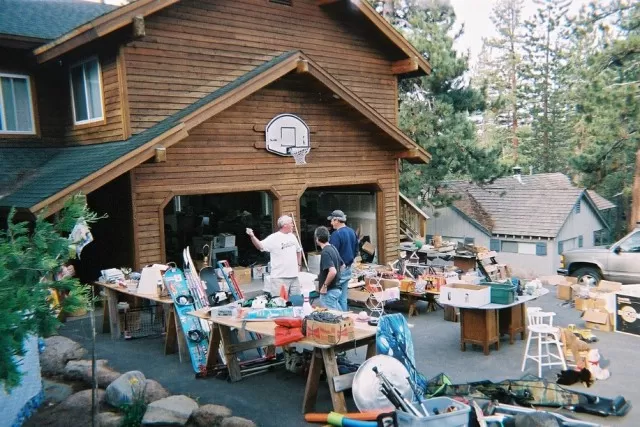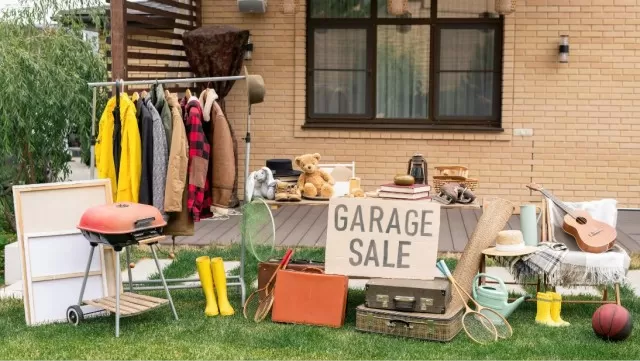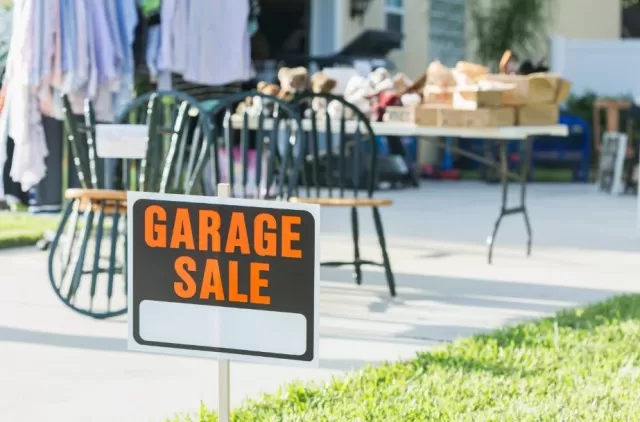Organizing a Garage sale offers the opportunity to turn unused belongings into extra funds that can be used for various purposes.
Organizing a garage sale offers the opportunity to turn unused belongings into extra funds that can be used for various purposes, such as indulging in a special purchase, settling bills, or making charitable donations.
However, hosting a successful garage sale requires careful planning, preparation, and execution. To maximize your earnings and ensure a smooth process, consider these expert tips from Tanisha Porter, a professional organizer and owner of Natural Born Organizers, and Shannon Quimby, a renowned garage sale expert, and designer based in Portland, Oregon.
By following their advice, you can make the most of your garage sale and reap the rewards of your Hard Work.
Tricks to Succeed at Garage Sale

To maximize your earnings and ensure a smooth process, consider these expert tips:
Define the purpose of your garage sale: Before organizing your garage sale, it’s important to determine the goal behind it.
Whether it’s to recoup some money, generate income, or pass on items to new owners, understanding your motivation will help you stay focused and driven throughout the process.
Study the competition: Before hosting your garage sale, take the opportunity to visit other local sales in your area.
Observe what works well and what doesn’t, and take note of effective pricing strategies. Online platforms like community message boards, newsletters, and apps such as Nextdoor can provide valuable insights and inspiration for crafting your successful sale.
Select a suitable date: Opt for hosting your garage sale on Fridays or Saturdays, as these tend to attract more potential buyers.
Consider scheduling it on the first weekend of the month, when people often receive their paychecks and have more disposable income. Allow yourself at least a month to prepare for the sale by setting the date in advance.
Begin gathering items for sale: Start collecting items for your garage sale by sorting them into categories such as children’s items, kitchenware, linens, and workout gear.
This categorization will simplify the setup process later on. If you plan on making your garage sale an annual event, like Quimby’s, you can collect sale items throughout the year, gradually adding to your inventory.
Price items as you collect them: Instead of leaving pricing until the last minute, assign prices to your items as you gather them.
This approach saves time and ensures that you don’t undervalue or overprice items on the day of the sale. Keep in mind that garage sale shoppers often expect discounted prices, so price items accordingly.
Use affordable price tags: Minimize expenses by opting for inexpensive price tags.
You can use stickers from discount stores, masking tape with handwritten labels, or even tear-up brown paper bags to create DIY tags. Another option is to make tie-on tags by punching holes in small pieces of paper.
The key is to keep pricing simple and visible.

Create a pricing sheet for clothes: Simplify the pricing process for clothing items by creating a price sheet instead of individually pricing each piece.
Determine the pricing ranges for different types of clothing, such as socks, T-shirts, or coats, and display the price sheet near the clothing section of your sale. This makes it easy for customers to see the prices and make purchasing decisions.
Strategically advertise your garage sale: Utilize various advertising channels to promote your garage sale effectively.
Start by posting online ads on platforms like Craigslist, Facebook, and local garage sale listing websites. Hang flyers in your neighborhood, and make sure to inform friends and family through word-of-mouth and social media.
Catch attention with a catchy yet simple name for your sale. Include essential information such as your full address, dates, and operating hours.
Mention acceptable forms of payment, especially if you accept credit cards or online payment methods like Venmo.
Utilize physical garage sale signs: Hang clear and legible signs within a mile radius of your house, directing people to your sale.
Use sturdy tape or existing nails on wooden poles (where permitted) to secure the signs. Make sure all signs are uniform in appearance and include the sale’s days, times, and address.
Check that the signs are easily visible from a distance. Research local regulations on posting signs before proceeding, and consider using sidewalk chalk to draw arrows pointing to your house on the day before the sale for added visibility.
Gather essential supplies: In the week leading up to your garage sale, gather necessary items and keep them in one place for easy access.
Arrange to borrow tables for displaying items, ensuring you have enough for your needs. Prepare a cash box with a variety of bills for making change.
Other essential items include calculators, chairs, bags for packaging purchases, pens, tape, scissors, and various tools to assist with setup and organization. Consider providing treats and drinks for sale to enhance the shopping experience.
Prepare digital tools if necessary: If you plan to accept credit cards or online transfers as payment, purchase an inexpensive credit cards reader such as Square and download apps like Venmo to facilitate transactions.
Ensure you have a working internet connection, including a reliable hotspot if necessary. Consider using a sales recording app to keep track of purchases, especially for group sales or multiple sellers.
Set up the day before: Give yourself a day to set up before the garage sale.
If items will be stored outside overnight, cover them with tarps or sheets to protect them from the elements. Arrange your sale items in an organized and visually appealing manner, using tables and risers to create different display zones.
Group similar items together, such as kitchenware or Living Room decor, and create attractive vignettes to inspire buyers. Designate a kids’ section and place items at their eye level to encourage longer shopping periods for parents.

Ensure items are in good condition: Before the sale, ensure that all items are clean, unwrinkled, and in good working order.
Inflate tires and test electronics to confirm they are in working condition. Throughout the day, have someone available to tidy up displays, fold clothing, and rearrange items to maintain an attractive presentation.
Continuously restock and refresh your sale area to attract returning customers and potential buyers.
Display clothing thoughtfully: Hang clothing items in a way that makes them easily visible to shoppers.
Consider using a clothing line, a fence, or a clothing rack to showcase garments effectively. Present complete outfits whenever possible, as they tend to attract more interest.
Group similar clothing items together and label them with sizes to facilitate browsing. Separate higher-value items, such as handbags, dress coats, or sports gear, and create a designated area for specialty items.
Highlight jewelry and eyewear: Dedicate a section of your sale to jewelry, sunglasses, and readers.
Utilize cork bulletin boards, hooks, or window screens to display jewelry, making sure to group items by style. Keep earrings together and present them attractively.
Provide a convenient and accessible location for customers to browse and try on these smaller items.
Bundle linens into sets: Bundle sheets, pillowcases, and towels into sets to simplify the purchasing process.
Label each bundle with its corresponding size and arrange them neatly, tied together with twine or string. Place napkins alongside tablecloths to encourage customers to select coordinating items.
Ensure that all linens are clean and well-presented.
Offer drinks and treats at checkout: Enhance the customer experience and boost sales by offering drinks and individually packaged treats at the checkout area.
Have coolers or buckets filled with ice to keep drinks cold? Small snacks can be an additional source of revenue. Consider selling cookies, candy, or other treats to entice customers and create a pleasant shopping atmosphere.
Be prepared for negotiations: Be ready for customers to negotiate prices during the sale.
While it’s important to have fair prices in mind, be open to reasonable offers. Determine the lowest price you’re willing to accept before the sale begins.
Consider reserving negotiation options for subsequent sale days to keep the process flowing smoothly.
Reconsider holds: Think twice about allowing holds for items during the sale.
Experience has shown that most people who put items on hold do not return to purchase them. Instead, inform customers of the end time of the garage sale and let them know that the remaining items will be part of a donation pickup.
Encourage them to return before the sale ends to make their purchases.
*The information is for reference only.